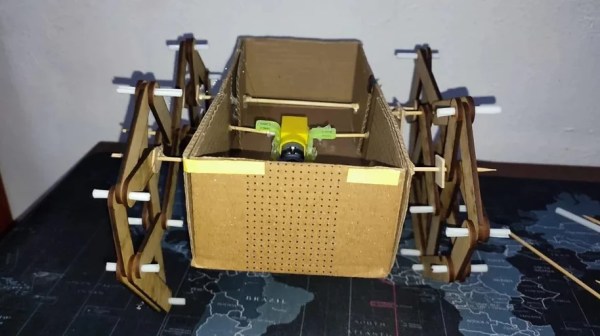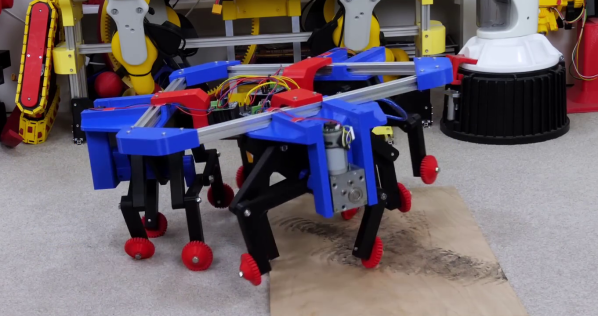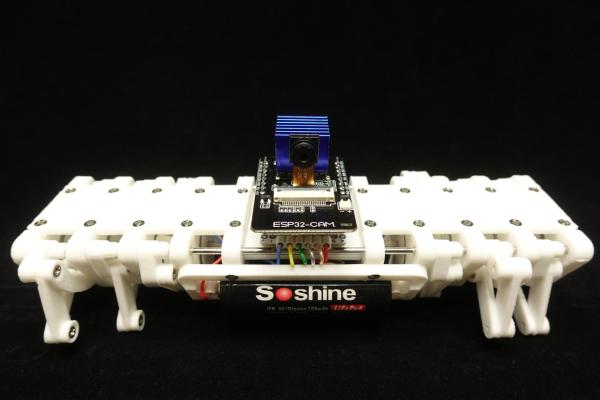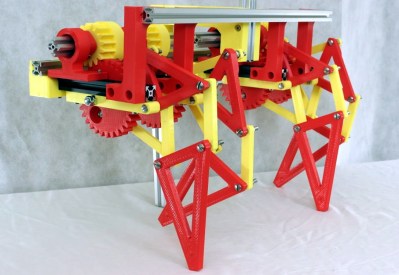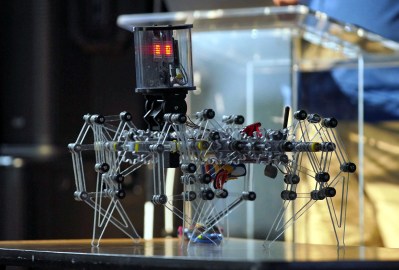[Theo Jansen] is famous for his giant walking Strandbeest creations. They’re elegant, impressive, and powered by nature, and their walking mechanism is a thing of beauty. If you’ve ever wanted to build your own, [Antonio Garcia] has just the guide to get you started on the smaller scale.
Unlike so many other builds today, this one features some good old fashioned craft techniques. The build uses popsicle sticks for the legs, what appear to be toothpicks for the joints, and a cardboard box for the main body. A small brushed DC motor is used for propulsion to keep things easy, which runs off a few AA batteries. It’s a gearmotor, which gives it plenty of torque to propel the walking mechanism without undue strain.
It may not be powered by nature, and it may not be taller than most humans, but it’s still got an appealing gait and it still inspires us with its design. If you want to learn more, go ahead and take a gander at [Theo Jansen’s] own designs and see what you can pick up. Video after the break.
Continue reading “Build A Strandbeest Replica Of Your Very Own”

